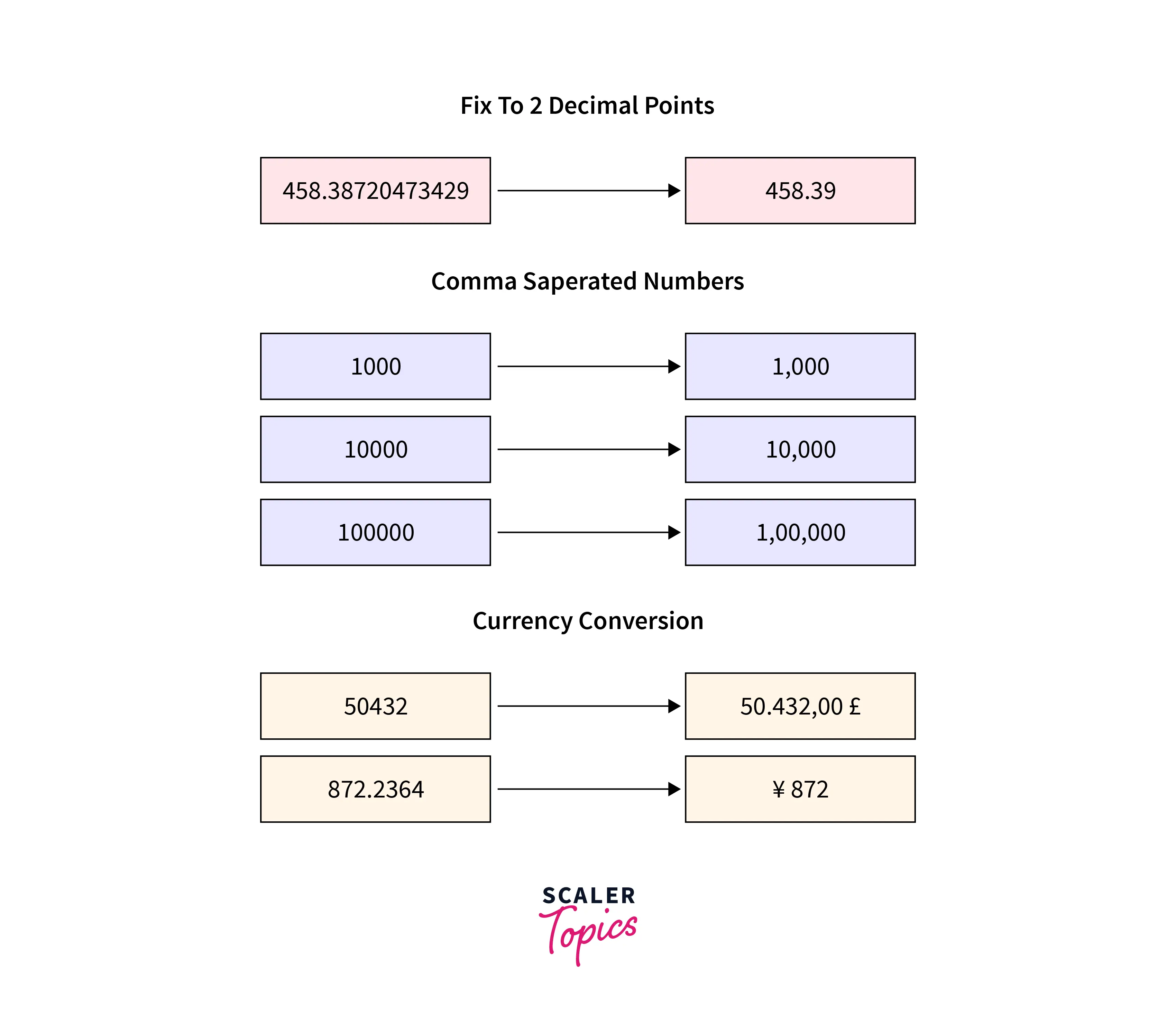Javascript Format Number

Overview
In JavaScript, all types of numbers, including integers, floats, and decimal values, are considered primitive data types. Number manipulating methods are available in javascript, but they all work with objects. Even though these methods cannot be used on primitive data types, we can use javascript's number manipulation functions on primitive datatypes of numbers because this language treats each fundamental datatype as an object in javascript format number.
Introduction
In comparison to Java, C, and C++, JavaScript does not have integer, float, or double data types for numbers. JavaScript instead makes use of a Number data type, which is double by default. Numeric values are represented by the number data type. It can be applied to both floating-point and integer numbers in javascript number format.
In most cases, converting a long float value to a precision of 2 or 3 comes up while programming. Like 3.141592 => 3.14. Additionally, you may need to convert a number to another unit of currency, such as 100 to $100, or to a general big number into a comma-separated number, such as 1000000000 to 1,000,000,000.
The image below shows these problems, which can be resolved by formatting the numbers.

Syntax
The syntax of javascript format number for a number with up to two decimal places using the toFixed() method is as follows:
Parameters
- Locale (optional): If ignored, the host environment's current locale will be used by the method (e.g., default browser language)
- Options (optional): Formatting options for the object
Limit to Two Significant Digits
Use Default Locale and Custom Number Formatting
In javascript number format, To use the browser's default locale set the first parameter to undefined.
Change Formatting Style
There are three possible values for a style property in javascript format number:
- percent
- currency
- unit
Style: Percentages
In some languages, percentage localization is a challenging task. Not all languages put the percentage sign after a number. For example, in Arabic languages.
Style: Currencies
To format a number into a string, use the style property in the options object with the value currency.
To change currency formatting using javascript format number, you can change the currencyDisplay property. These are possible values:
- symbol (default)
- code
- name
Style: Units
One of the most understated locale features in javascript is units style. You can format numbers into any widely used units with the appropriate formatting for a given locale. for example:
List of JavaScript Number Locale Units
You can check all of the unit property's values in the javascript number format below.
| unit value | unit value | unit value |
|---|---|---|
| acre | gigabit | minute |
| byte | hour | minute |
| bit | hectare | ounce |
| centimeter | inch | petabyte |
| celsius | kilobyte | percent |
| degree | kilobit | pound |
| day | kilometer | pound |
| fahrenheit | liter | second |
| foot | megabit | terabyte |
| fluid-ounce | megabyte | terabit |
| gigabyte | mile | week |
| gallon | meter | year |
| gram | mile-scandinavian | yard |
Kilometer Per Hour
The keyword per can be used to combine two values, such as X-per-Y. such as kilometers per hour. JavaScript will format this compound unit using the most appropriate localized pattern.
Terabyte Per Gram
Any combination is acceptable for the unit property in javascript number format. The unit property doesn't have to make any sense.
Conclusion
- In JavaScript, all types of numbers, including integers, floats, and decimal values, are considered primitive data types.
- Number manipulating methods are available in javascript, but they all work with objects.
- In comparison to Java, C, and C++, JavaScript does not have integer, float, or double data types for numbers.
- Numeric values are represented by the number data type. It can be applied to both floating-point and integer numbers in javascript number format.
- In some languages, percentage localization is a challenging task. Not all languages put the percentage sign after a number.
- The keyword per can be used to combine two values, such as X-per-Y. such as kilometers per hour.
